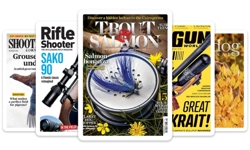A decade ago, there was a term called ‘article marketing’, and old school marketers from the publishing world may recall this practice of taking an article and republishing it on user-generated article archive sites. The goal was to get our content seen by an audience larger than our own, while linking back to the original article.
A decade later, we have handfuls of social networks that let us do the same thing in various ways. A literal exchange is LinkedIn Pulse, where you can recycle an article in its entirety and leverage your LinkedIn network for views and a link back to the original article (Google seems to be cool with this duplicate content).
On other social networks like Twitter, your content gets dissected into lines and quotable excerpts that are framed to fit 140 characters, sometimes with extra room left over to add a featured image.
Create a Twitter strategy for your magazine
Twitter can be an enormous source of traffic, no matter what industry you're in. B2C brands in the health, parenting and gardening spaces can do just as well as those in more professionally focused niches like investing. With B2B brands, you might expect it to be harder to gain an audience, but a publishing brand like Waste Management World (@WMW_Magazine) has almost ten thousand followers, and even Oil Gas & Technology (@OGTCavendish) has more than three thousand.
That doesn't compare to Mother&Baby's (@MotherAndBaby) nearly sixty-six thousand followers, but ad and product sales between B2B and B2C companies differ as well. B2B magazines have higher priced ad spots and products, so they typically need fewer subscribers to make money, on a per subscriber, or per sale basis.
Regardless of the industry you're in, developing a Twitter strategy can be broken into five main goals:
1. Get more followers
The more high-quality followers you have, the larger audience who sees your tweets. If you're a new magazine with few followers, use Twitter's ad platform to promote your account or boost individual tweets to the people you want to follow you.
2. Increase traffic from social
Twitter's main purpose for most magazines is to get more traffic, which equals more ad dollars. Building a community is important, but as business people, we know the end goal of those efforts is to get clicks.
3. Build a community around your brand
To gather up a tribe around your brand, you can't just promote articles all day. It requires asking questions, answering questions, participating in tweet chats, posting photos and starting conversations that are relevant to people in your niche.
4. Improve your search engine optimisation
If you've put in the elbow grease to create high-quality content that's optimised for search engines, then getting tweeted, retweeted and favourited are the social signals that search engines like Google will use to decide if someone will find your article in their search results.
5. Generate revenue
Followers, traffic, community and search optimisation all boil down to one common goal: increasing revenue. If you're ad-driven, traffic is your primary objective, and the larger community you have, the more clicks you'll garner down the road, and the more traffic you can show to advertisers. If you're subscriber-driven and produce multi-platform publishing products, you're on Twitter trying to drive traffic back to your site, but also back to landing pages.
In terms of order, revenue might come first to your mind, but steps one through four are necessary to complete it.
How to turn magazine articles into clickable tweets
To accomplish all five goals, spend more time writing your tweets. When you get a newspaper on your doorstep (or in your mailbox, or on your smartphone) what's the one thing that captures your attention?
If it's not a photo, it's the headline.
With online magazine content, all you have are headlines. That makes your business an ideal candidate for Twitter success.
On that note, there's a lot more to it than publishing a link to your article and using the same headline over and over. Instead:
* Write tweets that are easy to share. Use compelling copy and eye-catching graphics to get people back to your website.
* Use the title as a tweet, but make sure it's an attention-capturing headline. If it's search-optimised to the point of not being very catchy, alter it to be headline worthy for social purposes.
* Use the subhead of the magazine article as the tweet, and reduce it to fit. Add hashtags to familiar words; eg: gardening, marketing, etc.
* Excerpt sentences from your articles. Use @'s when possible to attract possible retweets. For example, if you're an entertainment magazine writing about the new season of Doctor Who, reference them as @bbcdoctorwho, in your tweet, and if you're a celebrity magazine talking about Benedict Cumberbatch's new hairdo, refer to him as his Twitter handle, @BenedictCumb.
* Create several custom graphics, or purchase several stock graphics to use in your articles. Not only will they improve the quality of your articles, but they will also give you more graphics to attach to your tweets. Tweets with images have an 18% higher click-through rate, get 89% more favourites, and 150% more retweets, according to social scheduling tool Buffer.
* Write twelve unique tweets about each article. Schedule them once a day for the first twelve days, and then once per month for twelve months. This way your content survives a whole year online. If your content is news-based, shorten the lifecycle accordingly, perhaps promoting for twelve weeks instead.
* Align your promotional calendar with your editorial calendar. On the days when you're sending out a promotional email, send out a promotional tweet (or two, or three). Make an effort to turn social media into a stream of new subscribers.
Twelve unique Twitter formulas you can copy and recycle
Beyond your attention-grabbing headline and subhead, there are other ways to promote your content so that you can recycle articles on Twitter frequently without readers fatiguing of the same posts.
By writing several unique tweets about each post, and scheduling them out throughout the year, you can also snag the attention of your followers in different ways.
1. Summary tweet
People love posts that have good takeaways. Don't give away the whole cow, but give them a healthy excerpt that will make them want to click.
Goal: Peak their interest and get them to click.
Example: When it's cold, and your car is refusing to start, your car battery might be to blame. [link]
2. Praise tweet
Tweet @ anybody who was mentioned in the post. This will put your post in front of the people most likely to retweet it.
Goal: Get your post in front of the people you’ve mentioned and hope for them to retweet the post too.
Example: According to @ModFarm, there seems to be no rhyme or reason when backyard chickens will decide to lay eggs. [link]
3. Hashtag tweet
Include one trending hashtag in your tweet, especially if you can find a relevant and popular hashtag.
Goal: When someone clicks another tweet that is using the same hashtag, they might see your tweet on the discovery page. Instant exposure.
Example: I've got #99problems, but #writing #tweets ain't one. [link]
4. Quote tweet
Directly quote something from the article (in quotes).
Goal: People love to retweet and favourite quotes, both of which send great social signals to Google about your post.
Example: "Writing a tweet takes 140 characters, but writing a good tweet takes 140 second-guesses." [link]
5. Fact focused tweet
Right-brainers love numbers. If there's a percentage or a statistic you can pull into the tweet, use it.
Goal: Retweets are abundant when factual statements are involved.
Example: 51% of people love raisins in their apple pie. We love them too, which is why we're drooling over this recipe! [link]
6. Click tweet
No one likes click-bait. But guess what? We all still click on them many times a day. Either sensationalise your story, or give them just a short statement that gets them to click.
Goal: Skip the small talk and get them to click.
Example: You'll never believe what _______________! [link]
7. First-person tweet
Who might benefit from reading your article? Encourage your readers to take action by telling them who to share it with.
Goal: This first-person request can garner more replies, retweets and favourites based on the personal nature of the request.
Example: We just created a list of ___________________. Share it with all the ___________ you know! [link]
8. Question tweet
Think of a question you can use to provoke people to answer? When they answer, make sure you acknowledge them with a favourite or a reply so that they're encouraged to respond in the future.
Goal: Get followers to engage, while also enlisting them to click.
Example: Before you click, what's your favourite type of ______________? We listed our favourites here: [link]
9. Comment asking tweet
Now that you've gotten their attention with a question, take your next tweet back to the blog.
Goal: Get followers to your site and boost its SEO with more post comments.
Example: We think _________________. Click to leave a comment on our blog with your thoughts! [link]
10. Peaked interest tweet
Elicit curiosity within your Twitter audience, and there’s an excellent chance you’ll get a click.
Goal: Get users to click the link so their curiosity can be fulfilled.
Example: 10 ways to _____________________ – #7 will surprise you! [link]
11. Solved problem tweet
Create a problem and solve it within your tweet.
Goal: The goal of this is to gain more website traffic and potential retweets, as your knowledge is certainly share-worthy.
Example: Trouble with _________? Try _________________. [link]
12. Image tweet
Photos, custom illustrated graphics and DIY graphic programs like Canva or Pablo go a long way in humanising your Twitter feed. You can combine the image tweet with almost any other formula, as long as they are congruent.
Goal: Break up the monotony of your Twitter feed and give your company some personality.
Use these twelve Twitter formulas to share content over the next twelve months. Over time, you'll discover which ones get clicks and engagement, and which ones don't. Since every magazine has a different audience, paying attention to how your tests perform is key.












